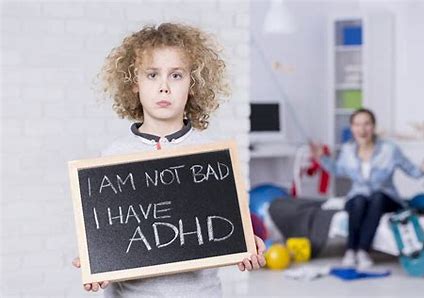with < My Thoughts > by Sara Luker
Previously, Attention Deficit Hyperactivity Disorder (ADHD) was sometimes an ‘alternative autism diagnosis’. A person with ADHD may or may not have eventually received an autism diagnosis. But an autism diagnosis doesn’t automatically mean they have ADHD.
HYPER-ACTIVITY (over active sensory response), is defined by an exaggerated or avoidant response to sensory stimuli.
Bogdashina & Casanova (2016) describe HYPER-Activity response as caused by a sensory channel that may stay ’wide open’, resulting in more stimulation than the brain can handle. Continuing to explain that children with HYPER-activity often engage in unwanted behavior. Their response is an acute, heightened, or excessive sensitivity to what is happening in the environment.
Phelan (2015) further explains the circumstances of one’s heightened perception. She says that upon hearing a dog bark, most of us pay attention briefly, and then carry on. But a child heightened perception, having a negative experience with dogs, may respond with a ‘startle’ response or feelings of anxiety until s/he feels they are out of harm’s way. For some with sensory issues, that keen state of alertness will stay with them throughout the day.
< My Thoughts > “…often engage in unwanted behavior.”
Persons with ADHD are always in motion, never paying attention, and typically thought of as a ‘wild child’. But sometimes the body is making that response, not because of HYPER-Activity but HYPO-Activity.
HYPO-ACTIVITY (under active sensory response), is considered a lack of or delayed response to sensory input, or even lack of orienting to loud sounds, and slow to react to pain.
Ausderau (2015) believes that HYPO-activity results when the brain is deprived because ‘too little’ stimulation gets in when the ‘channel’ does not open wide enough. The sensory system is under-responsive. Or, the normal processing of smells, sights, sounds, touch, and movement is dulled, under-developed, or processing the stimuli incorrectly.
These persons are always on the move, with no safety awareness. They jump off furniture & high places; and they especially love the trampoline. These things make them happy, because when engaging and thinking in movements, it is possible for them to shut out the normal world.
Sabatos-DeVito, et al. (2016) explain that hypo-responsive behaviors when particularly associated with autism, have been reported as early as 9-12 months of age. Also, it is pointed out that hypo-responsive children may be less sensitive to novelty, thus taking longer to notice and process something new in the environment.
< My Thoughts > “…taking longer to notice and process ‘novelty’ in the environment.”
As you can see, the hypo-responsive child doesn’t recognize the new ‘novelty’ in their environment. Without being able to gain the child’s interest, the parent, teacher, or clinician will have difficulty finding that ‘teachable moment’ which can bring the child closer to learning. Sonny can become so busy in his own world that he refuses to disengage long enough to see a new toy or puzzle in his room. Then when he finally does respond, which maybe hours later, he will make two or three passes, looking at it out of the corner of his eye as he strolls by.
Siri & Lyons (2014) believe a HYPO-responsive tactile system (sensory seeking) is generally associated with a low level of arousal. This child may typically appear ‘tuned out’ and therefore also less available to stimuli. In order to raise arousal level, they may gravitate to messy and unfamiliar textures, in an effort to better process things. Or, they can be excessively rough without ill intent. You will find them fidgeting or leaving their seat often, in order to provide alerting input and better body awareness.
Hypo-sensitivity, hyper-sensitivity, or ‘mixed’ sensitivity occurs when the brain does not efficiently process information coming from the body or the environment. Children with hypo-sensitivity require increased intensity in taste, texture and/or temperature in order to process sensations. These children tend to prefer crunchy textures, and strong flavors.
< My Thoughts > “…‘mixed’ sensitivity…”
Some research suggests that certain patterns of HYPO & HYPER Activity can co-occur simultaneously, as individuals react to a sudden sensory stimulus from the environment.
Donkers, et al. (2015) talk about ‘mismatched’ reactions to environmental stimulus. They say that when the brain responses to stimuli triggering a memory of something painful, it causes them to react in an unusual way.
< My Thoughts > “…react in an unusual way.”
Our Sonny sometimes expresses sadness when he is in fact very happy. And conversely, may express happiness when he is sad or disappointed. Some children start showing signs of anxiety, when they are really just happy and excited. This may or may not be the result of a ‘mismatched’ reaction, but it is an ‘unusual response’.
Neil, et al. (2017) remind us that it is important to choose which behaviors are HYPO and which are HYPER responses, because measuring, diagnosing, and labeling is important to provide funds for various services from providers and insurance companies.
REFERENCES:
Ausderau, K., Sideris, J., et al. (2014). National Survey of Sensory Features in Children with ASD: Factor Structure of the Sensory Experience Questionnaire; Journal of Autism Developmental Disorders; V44, p915–925.
Bogdashina, O., & Casanova, M. (2016). Sensory Perceptual Issues in Autism & Asperger Syndrome; 2nd Edition, eBook.
Donkers, F., Schiput, S., et al. (2015). Attenuated Auditory Event-Related Potentials & Associations with Atypical Sensory Response Patterns in Children with Autism; Journal of Autism Developmental Disorders; V45, p506–523.
Neil, L., Green, D., et al. (2017). The Psychometric Properties of a New Measure of Sensory Behavior in Autistic Children; Journal of Autism & Developmental Discord; V47:4, p1261-1268.
Phelan, S. (2015). Understanding the Subtypes of Sensory Processing Disorder; Retrieved online from –nspt4kids.com › Resources › Occupational Therapy.
Sabatos-DeVito, et al. (2016). Eye Tracking Reveals Impaired Attentional Disengagement Associated with Sensory Response Patterns in Children with Autism; Journal of Autism Developmental Disorders; V46, p1319–1333.
Siri, K. & Lyons, T. (2014). Cutting-Edge Therapies for Autism; 4th Edition; Skyhorse Publishing, New York, N.Y.

 RSS Feed
RSS Feed